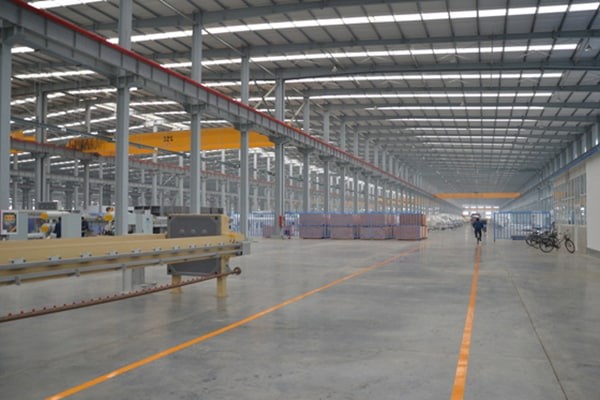Steel structure is one of the common structural forms in modern architectural engineering.Steel structure installation technology is more and more widely used in our country, and many advantages of steel structure are valued, and the application of steel structure is also increased. This paper analyzes the installation technical requirements of the steel structure project to strengthen the technical application and management of the steel structure project and ensure the safety and reliability of the entire steel structure project.
Single-layer portal frame installation
The single-span structure should be hoisted in order from one side of the span end to the other side, middle to both ends, or both ends to the middle. For multi-span structure, it is advisable to hoist the main span first and the sub-span afterwards; when multiple cranes work together, they can also be hoisted at the same time. The single-layer portal frame steel structure should be installed in the order of upright column, connecting beam, column bracing, crane beam, roof frame, purline, roof bracing and roof panel.
During the installation of the portal frame structure, the temporary column bracing or the cable wind rope needs to be installed in time, and it can be expanded and installed after forming a stable space structure system.The stable space structure system should be able to withstand the effects of structural dead weight, wind load, snow load, earthquake action, installation load and impact load during hoisting.

Multi-layer and high-rise steel structure project installation
1.The installation of multi-story and high-rise steel structures should be divided into multiple flow operation sections for installation. The division of flow section should meet the following requirements:
1).The heaviest member in the flow section should be within the hoisting capacity of the hoisting machine;
2).The climbing height of lifting equipment should meet the lifting height of the members in the lower throttle water section
3).The length of the column in each section of water should be determined according to factors such as factory processing, transportation and stacking, site hoisting, etc. The length should be 2 to 3 floors high, and the section location should be 1.0 to 1.3m above the beam level
4).The division of the steel structure flow section should be compatible with the installation of the concrete structure;
5).According to the structural characteristics and site conditions, each flow section can be divided into planes for installation
2.The hoisting of components in the assembly line section should meet following requirements:
1).The hoisting can adopt the order of the first column and the second beam in the whole flow section, or the order of the first column and the second beam; the single column cannot be in the cantilever state for a long time;
2).The installation of steel floor and pressed metal plates should be synchronized with the progress of component lifting;
3).The hoisting sequence in the special flow section should be determined according to the installation process and should meet the requirements of the design documents.

3.The installation and calibration of multi-layer and high-rise steel structures should be based on the reference column and should meet the following requirements:
1).The reference column should be able to control the plane size of the building and facilitate the correction of other columns. The corner column should be selected as the reference column
2).Appropriate measuring instruments and calibration tools should be used for steel column calibration
3).After the calibration of the reference column is completed, other columns shall be calibrated
4. During the installation of multi-layer and high-story steel structures, the floor elevation can be controlled by relative elevation or design elevation, and should meet the following requirements:
1).When design elevation control is adopted, the column elevation should be adjusted in units of each column, and the elevation of each column should be meet the design requirements;
2).The allowable deviation of the total height of the building and the difference in height of the column tops of the columns in the same floor shall comply with the relevant provisions of the current national standard "Code for the Acceptance of Installation Quality of Steel Structure Engineering" GB50205.
3).For the same pipeline operation section and the same installation height, when all the components of each column are installed, calibrated, connected, and accepted, the positioning axis of the previous section should be placed from the ground. During the installation of high-rise steel structures, the impact of vertical compression deformation on the structure should be analyzed, and corresponding measures such as pre-adjusted installation elevation and connecting members after installation should be taken according to the structural characteristics and the degree of influence.
